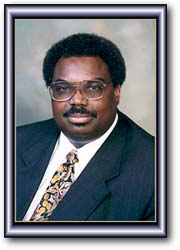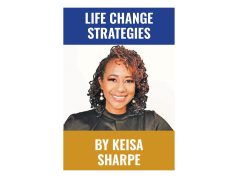We forget that young people are powerful in so many ways. They change things culturally. They change things socially. They change things economically. They change things educationally. They change things technologically. We forget that young people are powerful in changing things.
The many ways young people change things are far too numerous to explore in this Sketches. Therefore, I want to review just one front on which young people profoundly changed things. I know that Dr. King is given the credit for changes wrought during the American Civil Rights Movement. And he deserves great credit but not all or most of the credit. We forget that it was young people who were truly on the front lines in changing things.
Let’s start in 1955. We hear about Dr. Martin Luther King, Jr. We hear about Mrs. Rosa Parks. We hear about their roles in the Montgomery Bus Boycott. But it was a 15-year-old girl who set the stage for Rosa Parks, Dr. King and others. Her name was Claudette Colvin. When the bus driver ordered her to get up from her seat so a white man could sit down, Claudette refused. She was dragged off the bus, arrested and eventually adjudged as a juvenile delinquent. However, Claudette subsequently became a member of Mrs. Parks’ NAACP Youth Group, and her “sit down experience” on the bus deeply touched Mrs. Parks. It moved her to action. If Claudette Colvin had not stood up by sitting down, we may never have heard of Rosa Parks or Martin Luther King, Jr. We forget that young people are powerful.
Bruce Boynton of Selma was still a teen in 1958 when he took a stand. He was on his way home from Howard University Law School when he insisted on being served at the bus station’s only lunch counter in Virginia which was for White only. He was arrested and jailed. He filed a lawsuit, Boynton v. Virginia, which went all the way to the U.S. Supreme Court. The Court ruled that it was unconstitutional to segregate interstate passengers and transportation facilities. Boynton’s actions inspired the Freedom Riders Movement to test whether the U.S. Supreme Court’s decision really meant anything or was just another piece of paper. We forget that young people are powerful in changing things.
Four college students sat down at the Woolworth Lunch Counter in Greensboro, North Carolina in 1960, seeking to be served like whites. They were David Richmond, Joseph McNeil, Ezell Blair, Jr. (Jibreel Khazan) and Franklin McCain. When they were not served, they refused to leave. It became known as a sit in and ignited a movement. The actions by these four men inspired others to sit in at various locations across the South. This was another take off on what Bruce Boynton had done in 1958. We forget that young people are powerful in changing things.
Unlike the young people in other places, the young people in Nashville, Tennessee had guidance and training from Jim Lawson. However, the young people were the real moving force in the Nashville Movement. Leaders such as Diane Nash provided leadership not only during the Nashville Movement but across the South. We forget that young people are powerful in changing things.
In Birmingham, the movement appeared to be on its deathbed. Then public school students came to the rescue by the thousands. Without these students facing dogs, fire hoses, Bull Connor and other challenges, we may not have had the Civil Rights Act of 1964, which insured public accommodations for African Americans across the country. We forget that young people are powerful in changing things.
The Student Non-Violent Coordinating Committee (SNCC) was a moving force across the South. They went where others feared to tread, including Selma, Alabama. It was students such as Bernard Lafayette, who took the Selma Movement to the next level. Since Dr. King never went anyplace that other people were not already in movement, except for the work of the young people, he may never have come to Selma. It was young people who moved the masses of adults, including teachers, to march. Of course, this does not take anything away from Mrs. Amelia Boynton Robinson and other members of the Courageous Eight. However, the roles of youth get lost in the narratives of history. Without the youth of Selma, we may not have a Voting Rights Act. We forget that young people are powerful in changing things.
I personally recall my participation in the Voting Rights Movement. We were moving to the rhythm of our own spirits. No adults decided for us. I also recall that youth moved separately in the tracking movement in Selma in the early 1990s. It was young people who decided to occupy Selma High School. We adults did not know about it until it had happened. There are so many more examples: the Dream Defenders who occupied the Governor’s office in Florida; the Dreamers in the Immigration Movement; the young people in the current Justice Movement spurred on by the deaths of Trayvon Martin, Jordan Davis, Michael Brown, Eric Garner and others.
I have watched Alecha Irby of Selma organize marches in support of Trayvon Martin, get arrested in the State Capitol working for the expansion of Medicaid, and lead protests in the Birmingham area in the Black Lives Matter Movement. We must never forget that young people are powerful in changing things.
EPILOGUE – Too often we talk about young people. It is usually negative. We forget that young people are powerful forces for positive change. We forget that they move to the rhythm of their own spirits.




